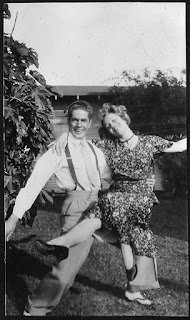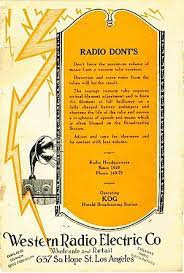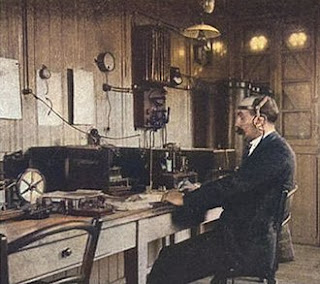The Long Beach Board of Trade, which would later become the Long Beach Chamber of Commerce, sprang into existence around 1891. It evolved out the collapse of the land boom of 1887, when the railroads decided time had come to step aside as advertising agents. Rail accessibility had literally put Southern California on the map. As a result of the railroads aggressive publicity campaigns, the region was known throughout the world as a subtropical paradise with a superb climate. It was now time for a new organization to step in to continue the promotion of the region and stimulate further migration.
Chamber of Commerce, 350 E. Ocean, 1927
With the big real estate boom on the wane, inflated property
values were being punctured and those who had bought heavily on speculation
were hurting. Many towns created during the once prosperous times collapsed.
Long Beach wanted to survive and knew to do so it needed a united community
spirit. Local businessmen banded together to help those who were having a hard
time. The Board’s advice and financial aid saved many.
One of their first sponsorships was creating a Long Beach band. On February 17, 1891, the first practice session of the band took place in the room over L. A. Bailey's store on Pine Avenue. The Board of Trade had decided music would attract visitors, and purchased twenty instruments. E. R. Brown, who had considerable experience in drilling bands, was elected director. After accessing the talent of his volunteers, he estimated that it would take three months of daily practice before the group would be good enough to play in public. The enthusiastic members vowed to work hard and prepare for the open-air concerts they hoped to give every other weekend in the park. If they were good enough, they would use the money they raised to buy music and perhaps even uniforms for the city's first official municipal band. On June 22nd their first concert was held in Pacific Park in the newly built band stand.
Squabbles over the role of the Board, led to a reorganization in 1894. Thomas Stovell, who owned the Alamitos and Long Beach Nurseries,
was elected president. Will F. Sweeney, who helped Captain Charles Healey
survey
The Board of Directors included J. J. Hart, who had a store on Pine Avenue; William Galer, publisher of the weekly Long Beach Breaker; George H. Bixby, son of Jotham Bixby, Sr.; J. C. Dunn, a contractor and builder; G. E. Packard, George W. Covert, and Lewis Wrisley.
On November 17, 1894, the Board of Trade adopted by-laws, which set forth the objectives
of the organization:
To foster, encourage and stimulate home industries and interests, to assist in securing a market for our products, to induce immigration and the settlement and cultivation of lands in our neighborhood, to assist in the development of the material resources of the region and generally to promote the business interests of Long Beach and vicinity.
On December 16, 1894, the Los Angeles Herald reported: “Everyone down here is interested in the permanency of this organization, and the role of membership is assuming massive proportions. The best of it is that they are all working for the good of the place, with sleeves rolled up and as one man.”
In 1903 the Board issued the “Ten Commandments for Long Beach.” Though we might not agree with all of them today.
1.
Thou shalt
prefer no other town above Long Beach.
2.
Thou shalt not
knock on this town to the stranger within its gates.
3.
Thou shalt
patronize the industries of this town to the exclusion of those of other towns,
for in the business of Long Beach is thy life.
4.
Thou shalt
realize the defects of the town and seek to remedy them, both as an individual
and as a unit in the community, but thou shalt keep all comment upon these
defects for circulation within the corporation limits.
5.
Thou shalt not
envy thy neighbor who has a bigger house nor thy neighbor who has a bigger
business.
6.
Thou shalt
encourage by word and deed and cash subscription every enterprise that has for
its purpose the building up of the town in wealth, in temporal convenience or
in righteousness.
7.
Thou shalt
remember that thou art not an individual but that thou art part of a community
and that thou hast duties not only to thyself and thy family but to the
community.
8.
Thou shalt vote
with an eye and a ballot single to the interests of the town – and vote every
time, in caucus, primary, convention, and general election.
9.
Thou shalt put
the interest of the entire community above the interests of any individual or
corporation or faction or clique or ward or party.
10.
Thou shalt boost
and not knock. (Long Beach Evening Tribune, 8/25/1903)
















_at_Brest,_France_(30091927581).jpg)






